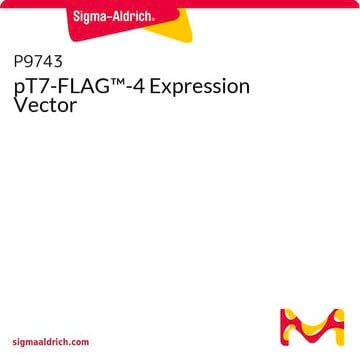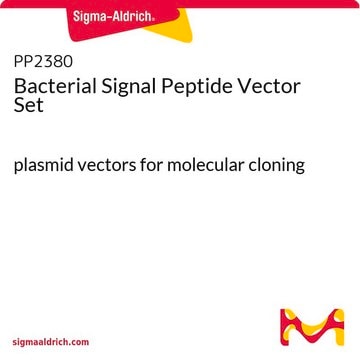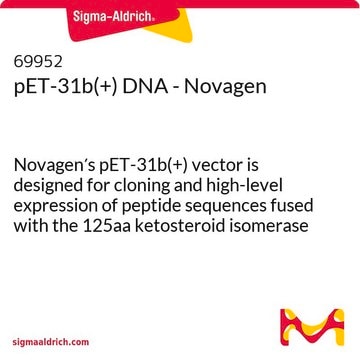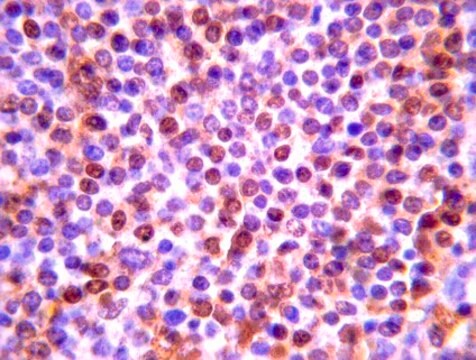OGS1122
PSF-CMV-PURO-COOH-TEV-6HIS - C-TERMINAL 6 HIS TAG MAMMALIAN PLASMID
plasmid vector for molecular cloning
Sinonimo/i:
cloning vector, expression vector, molecular cloning vector, plasmid, plasmid vector, snapfast vector, vector
About This Item
Prodotti consigliati
Tag
6-His tagged
Forma fisica
buffered aqueous solution
PM
size 6189 bp
Selezione batterica
kanamycin
Selezione cellule di mammifero
puromycin
Origine di replicazione
pUC (500 copies)
Clivaggio proteico
TEV
Posizione del tag peptidico
C-terminal
Promotore
Promoter name: CMV
Promoter activity: constitutive
Promoter type: mammalian
Gene reporter
none
Condizioni di spedizione
ambient
Temperatura di conservazione
−20°C
Descrizione generale
About the Peptide Tag:This plasmid contains a c-terminal Hexa-Histidine (6His) affinity tag that can be fused to a gene of interest to allow protein detection and/or purification. The sequence of the tag is: HHHHHH.
About the Cleavage Tag:This plasmid also encodes a protease cleavage site that is designed to be positioned between your gene of interest and the tag to allow the removal of the tag following protein purification or isolation. This plasmid contains a TEV cleavage tag. The protein sequence of the cleavage tag is: ENLYFQG. Cleavage occurs between the Glu and Gly residues. TEV is often reported to have better specificity for its recognition site compared to EKT Thrombin or Faxtor Xa.
Promoter Expression Level: This plasmid contains the mammalian CMV promoter to drive gene expression. We have tested all of our mammalian promoters in a range of cell types and CMV is consistently the strongest in those we have studied. However there are many reports of the CMV promoter demonstrating silencing by methylation in long-term culture.
Sequenza
Risultati analitici
Prodotti correlati
Codice della classe di stoccaggio
12 - Non Combustible Liquids
Punto d’infiammabilità (°F)
Not applicable
Punto d’infiammabilità (°C)
Not applicable
Certificati d'analisi (COA)
Cerca il Certificati d'analisi (COA) digitando il numero di lotto/batch corrispondente. I numeri di lotto o di batch sono stampati sull'etichetta dei prodotti dopo la parola ‘Lotto’ o ‘Batch’.
Possiedi già questo prodotto?
I documenti relativi ai prodotti acquistati recentemente sono disponibili nell’Archivio dei documenti.
Il team dei nostri ricercatori vanta grande esperienza in tutte le aree della ricerca quali Life Science, scienza dei materiali, sintesi chimica, cromatografia, discipline analitiche, ecc..
Contatta l'Assistenza Tecnica.








